Hello everyone! I am Maddison Coca and I am fortunate enough to have a summer internship at the University of Houston, researching physical chemistry with Professor Baldelli and his team of grad students. I am specifically studying microcontact printing, which uses an ink patterned stamp to create chemical reactions between molecules from the ink and the surface of a substrate. Its significance is to establish an understanding of how cells interact with various substrates. I work Monday through Saturday from 9-5 with Fridays being 8-5 due to morning group meetings. This was my first week of settling in, beginning my research project, and experiencing the work hours of this group of chemists!
Starting my research June 6th, I dedicated the day to just getting a feel of being in a lab environment. For the first part of my day, I focused on reading up on what microcontact printing was and the steps necessary to complete a sample. Then for the second part of my day, I did some experimenting with the equipment I would be using. Friday and Saturday were my first official days working in the lab. My grad student started me on glass as my substrate—the easiest form of substrate to practice on—and I completed four crucial experiments, two a day.
Before creating a PDMS stamp that is used to print cells of gold onto, a hydrophilic glass sample has to be prepared by putting a hydrophobic film on the surface. To do this, you put Silane in a small cap and a sample of etched glass in a Petri dish next to each other in a vacuum desiccator. What a vacuum desiccator does is remove air and moister from its contents. In this specific experiment, it creates a PFOTS vapor from the Silane that essentially coats the surface of the substrate to make it hydrophobic. For all four experiments I used the vacuum desiccator for 30 minutes. The only difference was how many drops of Silane I experimented with and whether I not I put the substrates in a chemistry oven beforehand. My results were interesting…
For experiment one, I did no chemistry oven and two drops of Silane, resulting in relatively low contact angles:
For experiment two, I also did no chemistry oven but four drops of Silane, increasing contact angles to achieve a 103-120 degree angle range:
For experiment three, I used oven baked glass samples that had been cooking overnight at around 500 degrees Celsius and four drops of Silane because that seemed to work well with hydrophobicity. I got a 96-112 degree range:
For my last experiment, I used another oven baked glass sample, but tried a happy medium of three drops of Silane. My range was lower (97-110 degrees) compared to both experiments with four drops of Silane, but still higher than the experiment with only two drops of Silane:
In conclusion, two drops of Silane produces a hydrophobic film that is not as endurable as four drops or even three drops. Three drops of Silane is better than two but still not achieving the contact angles we want (which is 110-115 degrees but can also be higher as long as it has a good film and transparent view) while maintaining a good film and transparency. Comparing experiment two and three which used four drops of Silane but different forms of preparing the substrate, experiment two was the best because of the higher range of contact angles that still achieved good film and transparency as well as a mean left contact angle of 115.7 degrees and a mean right contact angle of 107.8 degrees.
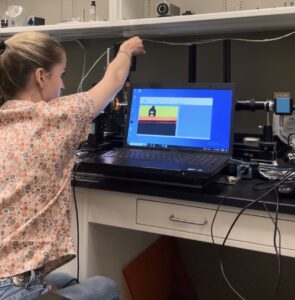
Using an optical tensiometer I am dropping a little bit of water onto my glass sample to test its hydrophobic film.
To take contact angles, you use an optical tensiometer, placing drops of water and capturing images of the droplet to later measure the degree of where the drop sits on the glass to its furthest “arm” on both sides.
Before starting my research, I got to participate in a small campus tour where I learned about some of the fun things University of Houston offers its students. I got a tour and demonstration of the glass shop, where a man blows specialized glass that cannot be ordered online for conducting experiments in labs. Texas Center for Superconductivity also gave my group a tour of their labs and what each lab group was researching. Finally, half of my intern group also went to one of the student centers on campus for bowling!

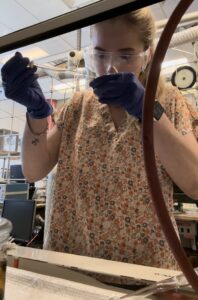
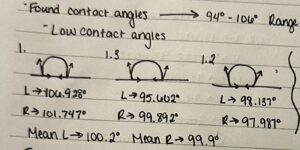


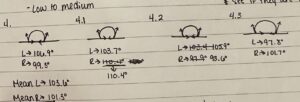
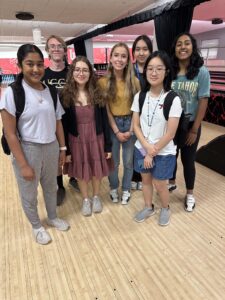
What an amazing opportunity! I am so proud of you Maddison! My beautiful granddaughter is on awesome journey! I love you 💕